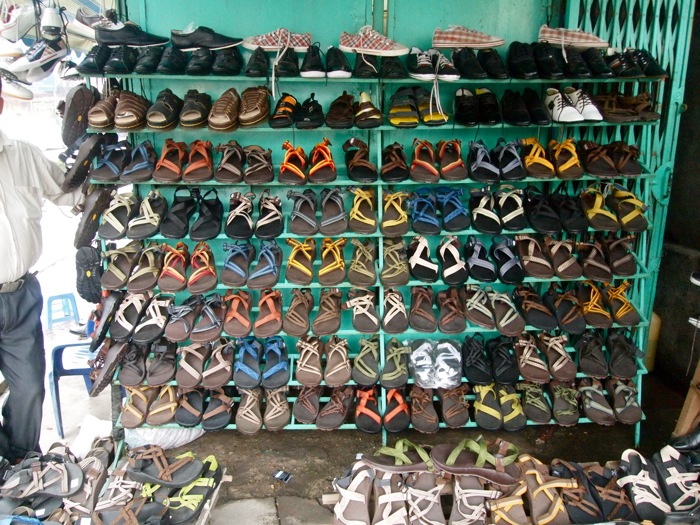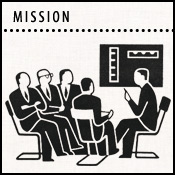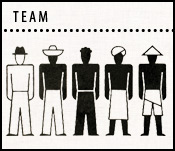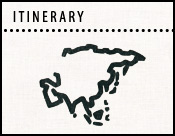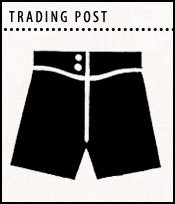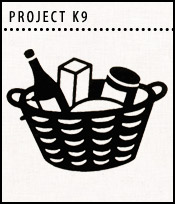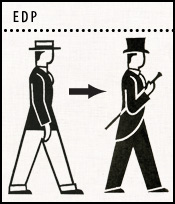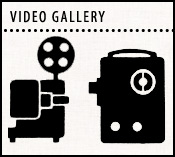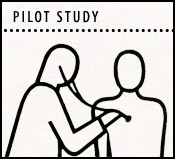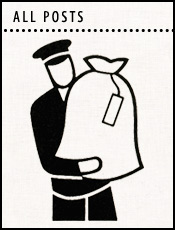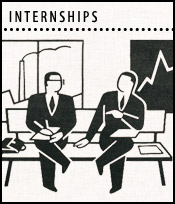October 12th, 2010
دمشق: Øبيبي
That next morning we collected our clothes from the line, stuffed them into our bags, and hit the road, soaring back down the hill and into town. We were sorely in need of some food that did not make us feel sick after eating it, and Scott had found a place in the Lonely Planet that appeared to offer some semblance of price to performance. So we headed off in search of it. We got hungrier and hungrier as the locals directed us this way and that, unsure of where the spot was. In the end, we were directed by a woman in an alleyway toward a large restaurant she claimed was the place we were looking for. It did not have the same name or the same menu, but by then we were becoming more beasts than men and women, so we just sat down.
It turned out to be your basic traveling management consultant’s fare, the kind of thing you might get at a sit-down restaurant in LAX. It was okay, but nothing amazing. And the LAX analogy extended easily to the pricing. By then we were coming to expect these kinds of manufactured experiences, and were beginning to just roll with them, in a sort of of grouchy Scrooge McDuck way.
We ate our medium food, and poured a bunch of the complimentary nuts into Claudia’s purse to save for later, and headed back out. We were unable to find the same kind of bus depot that we had in Beirut, and were informed by a group of cackling old men that we would need to take the local. So we pedaled to the bus stop, folded up our bikes, and soon the bus arrived.
We climbed on the thing and were immediately confronted by a shamelessly predatory bus driver, who insisted that we buy no fewer than 15 tickets, despite the fact that all our things and our bodies took up no more than six seats. We argued tirelessly with him, holding up the bus for quite some time, but in the end our imminent departure and frustration wore us down first and we just paid him. He handed me a giant roll of flimsy receipt-style tickets, which for the rest of the ride proved an unending source of laughter for our fellow passengers.
And so we rode on, along the beautiful coast of Lebanon, gritting our teeth and looking forward to choosing freedom in Syria. Finally the bus arrived back in the snarling traffic of Beirut. The driver stopped the bus, and came back to yell at us to hurry and unload our things. I muttered and bit my tongue.
We were unfolding the cycles and strapping our things down to the rear racks when the usual group of passersby began to form around us, interested in who these weirdos on the folding bicycles were. Among the crowd were a number of grimy street children, one of whom came over to us and asked to have some water. Having bought a six pack of two-liters the day before, we were happy to give him a bottle.
We then watched, aghast, as he walked over to the side of the road and began to pour the drinking water all over his head in order to cool himself. One of his friends came over trying to get some water, and the two of them exchanged a brief series of blows, with the newcomer eventually turned back empty handed. With our water completely poured out onto the ground, and empty the bottle littered in the street, the two kids had the audacity to return together and ask for another bottle.
That was it, it was time to wheel out of here. We hopped on the cycles, and began to pound down the road. Insane Lebanese drivers whipped by us, honking and careening. I didn’t even care, by this point I had one thought in mind: get back to the bus station and buy a ticket to Syria.
And that’s exactly what we did, arriving just in time to catch the last three seats on the next bus for Damascus. We made friends with a Syrian chap on the bus platform who made a point of chatting up Scott for the majority of the ride back over the Ante-Lebanese Mountains. He was interested in all kinds of things: American culture, sports, the World Cup, acronyms, and the English words for all kinds of things.  “What does FIFA mean in English?” he asked Scott.  “Well it’s an acronym, composed of the first letter of each word in the name of an organization.  And FIFA is actually the first letters of four French words.”  We reflected on how strange a concept this might have seemed.
He wanted very badly for us to come back to his village with him and sleep in his house. His home was three hours outside Damascus, though, and we just couldn’t spare the time. He kept at it, however, asking again and again, and eventually we were forced to give him the partially dishonest “maybe.â€
When we crossed over a ridge and the city of Damascus spilled out below us glowing and wonderful, our new friend turned back to us and exclaimed “Damascus, Ya Habibi!†(Damascus, My Darling). We could not agree more!
It felt wonderful to be back in Syria… like a breath of fresh air. We goofed around with the crowd of locals who gathered around us as we unfolded the cycles. None of them were preoccupied with ascertaining who was cooler: us or them. None of them were worried that their pants were “in” this season. They were just people, and we were just people too, albeit absurd foreigners rolling around Damascus at night on folding bikes. That’s all there was to it. Glorious.
As we wheeled down the highway back into town, we found ourselves marveling at how patient and relaxed the traffic seemed, compared to how gnarly we thought it was when we had arrived in Syria the first time. Traffic in Lebanon had been other worldly, just hellish. We passed by a giant wedding party at one of the many liquor stores that lined the road to the bus station, and stopped to take a peek.
There was singing, dancing, screaming, rice throwing, and general merriment. A group of machine gun-toting soldiers was watching the proceedings, laughing and swaying with the music. When they saw us they whooped out in supportive tones, encouraging us to engage in a giant circular marriage dance that was beginning. As tempting as that was, we decided to keep wheeling into town.
Back at the Ziad Al Khabir, they were ecstatic to see us once again, and the owner proudly showed us to a new room, something like the flophouse version of the presidential suite. Furthermore, we could stay in this fancier and rather gigantic room for no extra charge, he explained, for we were friends now.
Damascus, Ya Habbibi, indeed.
Our friend Hossam was also just thrilled to have us back in town. As we headed out the next morning into the bright sun and dry air of that most delightful city, we got a call from none other than Hossam himself. He was interested in eating lunch with us, introducing us to some of his friends, and solidifying plans that he had been cooking up for a large group barbecue.
We felt great about all of those things, and headed out into the old city market where we met the man, looking as dapper and put together as ever. We wandered through the old city together, investigating shops and restaurants that showed potential to provide us with lunch, passing by ornately dressed tamarind juice vendors and navigating the throngs of people.
We stopped at an amazingly ornate and ancient bathhouse on the way, which was a strong reminder to Scott and I how long it had been since we’d been to one, and how much we loved visiting public baths.
Of course, having Claudia around, we couldn’t indulge just then so we continued on, past all kinds of stalls selling everything from exotic spices to fresh made bulk hummus. The bulk hummus fellow stopped us and insisted that we try some.
“You can sample anything in this market,†Hossam explained, “and you will never be obliged to buy anything ,whether you approve of the sample or not. It is the Syrian way.â€
We loved the Syrian way, and continued to snack on bits of dried fruit, succulent olives, and neon colored pickles as we made our way along. Finally, we passed a particularly formidable looking organ meat restaurant and decided it would be the perfect place to eat.
And so it was. We delved into a truly magnificent meal of intestines stuffed with rice, tongue, brains, and mysterious milky looking soups. We ate the innards in the traditional Syrian style, grabbing them with flatbread, and then sprinkling onion, cilantro and lemon salt on top. It was unforgettably delicious.
As we ate, Hossam told us jaw dropping stories of his time in the Syrian military, where he had been sent out into the desert with just a knife, and expected to survive for days. He had eaten bugs, sliced himself and sewn the wound shut with his sewing kit (he had the jagged scar to prove it). At one point he even startled us all by putting a cigarette out on his tongue. What a character this guy was!
Conversation soon turned to the BBQ. We would need to do it tomorrow, it seemed, for as much as we loved Damascus, we needed to move on to other cities in Syria. So, with a little more discussion, the date and the menu were set.
We parted after agreeing to meet up again before the BBQ to purchase meats and vegetables.
We decided that night to indulge in a little Damascus night wheeling. We began by buying three cheap Syrian flashlights and some very nice British-made hose clamps. We used the clamps to attach the lights to our handlebars. The fellows at the hardware store that sold us the goods approved wholeheartedly of the system.
The streets were delightful at night, with reduced traffic and plenty of lighting.
And so we wheeled on, into an unexplored and rather maze-like part of town. Part way through the wheel, we stopped for some more of that garlic mayonnaise-soaked Syrian shawarma that we loved so much, sitting down on the curb to eat three giant wraps, the bill for which totaled less than $1.00.
Finishing up the night, we played cards and looked up curiosities on the wiki reader, becoming quite the curiosity ourselves in the process.


































































